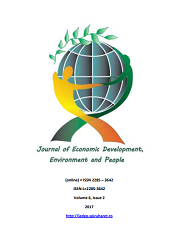Architectural Design and its Impact on PMR Accessibility in Higher Education Institutions
Architectural Design and its Impact on PMR Accessibility in Higher Education Institutions
Author(s): Imane Benkechkache, Mehdi KaghoucheSubject(s): Architecture, Higher Education
Published by: Editura Fundaţiei România de Mâine
Keywords: Accessibility; PMR; Architectural barriers; Technological barriers; Spatial syntax; VGA;
Summary/Abstract: This paper discusses the accessibility of people with reduced mobility (PMR) within public higher education institutions. Several researchers have approached this issue from different angles. They have identified several rights for PMRs, including the fundamental right to education, as recognized by the United Nations. Accessibility is defined as the ease of movement within the environment, achieved through the removal of architectural and technological barriers in public buildings. This study aims to show the impact of the architectural spatial configuration of the university on the social behavior of PMR accessing education. To achieve this goal and answer the research problem, a combination of two scientific research methods was used: a qualitative-quantitative method based on sociological surveys and observation, and a second method based on "spatial syntax," a morphological approach that reveals the close relationship between human beings and their built environment. The study was conducted at the Faculty of Architecture and Urbanism at Salah Boubnider University in Constantine. The study concludes that architectural design has a direct impact on the behavior of PMRs and their appropriation of space within the faculty. Designers need to consider measures and design techniques that facilitate access for this social category to higher education institutions in the development of architectural projects.
Journal: Journal of Economic Development, Environment and People
- Issue Year: 12/2023
- Issue No: 3
- Page Range: 31-46
- Page Count: 16
- Language: English

